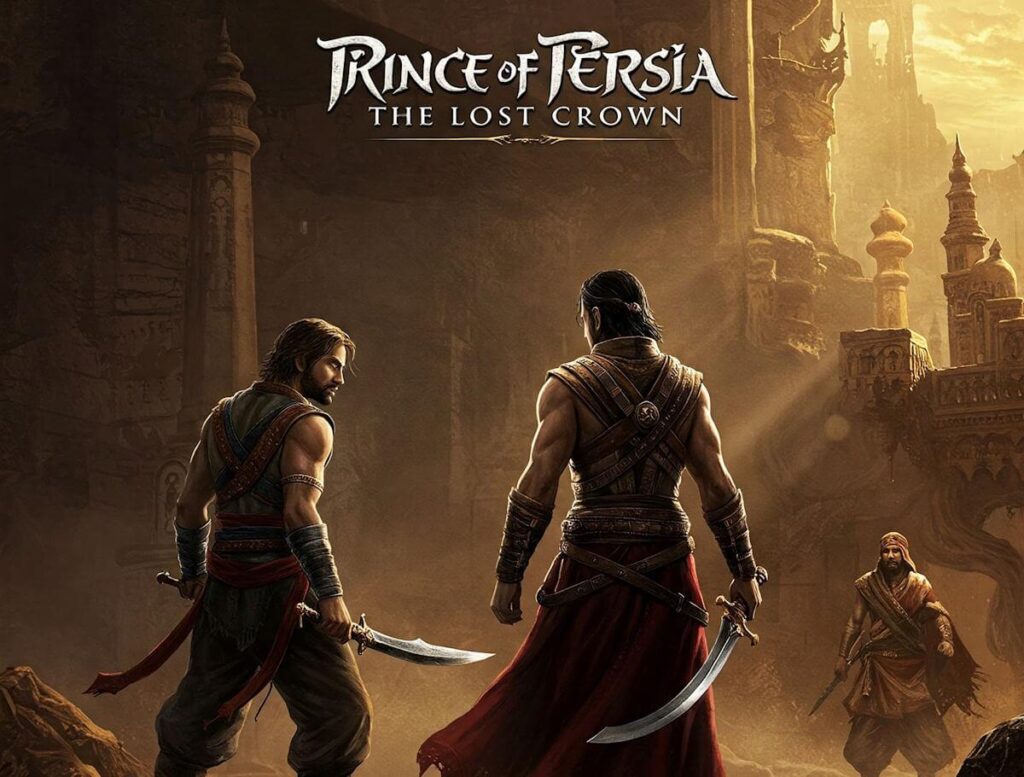Avatar: Frontiers of Pandora is an action-adventure game developed by Ubisoft and inspired by James Cameron’s visionary film franchise, Avatar. Set in the lush, vivid world of Pandora, the game is designed to immerse players in an expansive open-world environment that boasts breathtaking visuals and interactive gameplay. Developed with a focus on next-generation technology, Avatar: Frontiers of Pandora leverages cutting-edge graphics to create an experience that feels both authentic and captivating.
The game is situated between the events of the original Avatar and its sequel, distinctly enhancing the franchise’s narrative scope. As players traverse this mysterious landscape, they assume the roles of Na’vi characters, engaging with both the unique fauna and flora of Pandora and the ongoing conflict with human colonizers. This intriguing blend of storytelling and adventure aligns with the tone established in the films, fostering high expectations amongst fans and gamers alike.
Since the initial announcement, trailers showcasing Avatar: Frontiers of Pandora have set ambitious benchmarks for graphical fidelity and world design. Gamers have eagerly anticipated the chance to explore the vast landscapes of Pandora, which are filled with towering mountains, sprawling forests, and iconic locales from the cinematic universe. The developers have also highlighted various gameplay mechanics that promise to enhance player agency, from combat strategies to exploration dynamics, enriching the overall experience.
As enthusiasts delve into the world of Avatar: Frontiers of Pandora, they hope to witness a faithful representation of the beloved franchise alongside innovative gameplay elements. However, in the gaming industry, anticipation often walks hand in hand with apprehension, as players remain curious about whether the beautiful presentation can deliver substantive content. The forthcoming release invites speculation and excitement as fans await to immerse themselves in this latest venture into the Avatar universe.
Visual and Artistic Design
Avatar: Frontiers of Pandora presents an impressive exhibition of visual artistry and design, encapsulating the ethereal beauty of Pandora as envisioned in James Cameron’s cinematic creation. The game’s graphics leverage cutting-edge technology to create an environment that is not only visually striking but also immersive, drawing players into a vibrant world brimming with life and wonder. The intricate details of the lush landscapes, from towering mountains to expansive forests filled with bioluminescent flora, evoke a sense of realism that elevates the entire gaming experience.
The artistic design is carefully crafted to reflect the culture and environment of the Na’vi, showcasing elaborate character models that embody the essence of their species. Each character is designed with meticulous attention to anatomical accuracy and cultural nuance, ensuring that players connect with the inhabitants of Pandora on a deeper level. The use of color, texture, and lighting plays an essential role in creating a cohesive aesthetic that enhances the storytelling aspect of the game.
Beyond individual character design, the game’s art direction excels in portraying the rich ecosystem of Pandora. The environmental design includes not only stunning visuals but also dynamic weather patterns and time of day transitions that influence gameplay. This dedication to realism allows players to experience the planet as a living entity, where every corner offers new adventures and discoveries. The combination of these elements results in a captivating visual narrative that mirrors the grandeur of the original film while allowing for unique explorations in the gaming medium.
This synergy between the game’s graphics and its underlying story serves to enrich the overall player experience, making Avatar: Frontiers of Pandora a testament to the potential of video game artistry. Through its artistic design, the game captures the essence of Pandora, conveying both its beauty and depth while inviting players to explore its majestic realms.
Gameplay Mechanics and Structure
The gameplay mechanics of “Avatar: Frontiers of Pandora” present a combination of exploration, combat, and narrative engagement, which collectively aim to immerse players in the vibrant world of Pandora. At its core, the game encourages players to explore diverse environments that range from lush forests to mountainous terrains, allowing for a rich visual experience. The open-world design facilitates a sense of freedom, enabling players to traverse the landscape at their own pace. Exploration is not merely travel; it is integrated with interactive elements that reward curiosity and encourage players to engage with the surrounding ecosystems.
Combat mechanics in “Avatar: Frontiers of Pandora” are designed to be dynamic and varied. Players encounter different species of enemies, and the game employs a mix of melee and ranged combat options. Each character class offers unique abilities, providing a customizable gameplay experience that can adapt to various play styles. However, some critics have noted that while the combat is visually appealing, it occasionally lacks depth, leading to repetitive encounters. The result is a gameplay experience that can, at times, feel surface-level despite its well-crafted mechanics.
Narrative engagement is another focal point of the game. The storyline weaves into the gameplay, with players consistently making choices that impact their journey and development within Pandora. Dialogue systems and character interactions contribute to this narrative layer, resulting in an experience that feels cohesive. However, the depth of character development may vary, and some players might find themselves desiring a more profound connection to the narrative aspects.
In summary, “Avatar: Frontiers of Pandora” combines exploration, combat, and narrative engagement into its gameplay mechanics, creating an experience that is visually striking yet sometimes lacking in depth. Each element contributes to the overall structure, presenting both unique features and noticeable weaknesses that shape the player’s journey through this captivating yet empty digital world.
Storyline and Character Development
“Avatar: Frontiers of Pandora” presents a distinct narrative that unfolds within the expansive universe established by the original film. Set against the visually striking backdrop of Pandora, the game’s storyline revolves around the conflict between the indigenous Na’vi and the Resources Development Administration (RDA), which seeks to exploit the planet’s rich resources. This overarching theme of colonization versus solidarity resonates throughout the gameplay, emulating the deep-rooted tensions seen in cinematic narratives.
Upon entering this immersive experience, players are introduced to a custom character, whose journey intertwines with significant Na’vi figures and pivotal events that shape the narrative. The character development bestowed upon this protagonist allows for personal and emotional growth, providing players with an opportunity to forge their path. As players tackle various missions and challenges, there is a noticeable evolution in the character’s skills, moral choices, and interactions with the rich tapestry of the Na’vi culture.
The game effectively weaves personal stories of characters with the larger societal issues faced by the Na’vi. Throughout the myriad of quests, players encounter emotionally charged situations that challenge their perceptions and encourage introspection. This emotional depth significantly enhances the player’s connection to the storyline, contributing to a sense of immersion that encourages investment in the world of Pandora. Moreover, the game invites players to engage with its characters and their arcs, fostering a relationship that reverberates with the broader themes of sacrifice, loyalty, and resilience.
As the narrative unfolds, it remains connected to the larger Avatar universe, drawing upon familiar motifs while exploring new dimensions. This cohesion reinforces the game’s position within the broader mythology, ensuring that fans of the franchise find resonance in the experiences offered. Overall, “Avatar: Frontiers of Pandora” delivers a compelling storyline enriched by authentic character development, captivating players in a beautifully crafted but, at times, seemingly empty world.
Open World Exploration: A Double-Edged Sword
The concept of open world exploration has been a prevalent feature in many contemporary video games, and “Avatar: Frontiers of Pandora” is no exception. Players are granted the freedom to traverse the stunning landscapes of Pandora, allowing them to immerse themselves in a world that is visually captivating. The extensive environment presents players with breathtaking views, lush foliage, and intricate details that evoke the beauty of James Cameron’s cinematic universe. However, this vastness often brings with it a sense of emptiness that can detract from the overall experience.
In “Avatar: Frontiers of Pandora,” players can spend hours journeying through expansive terrains, yet the density of interactive content remains a critical factor. While the game promises a rich and vibrant ecosystem, it sometimes falls short in delivering engaging activities and encounters. The sheer size of the map may lead to long stretches of exploration where players encounter limited events, quests, or meaningful interactions. This juxtaposition of freedom and emptiness raises questions about the balance between exploration and engagement; players may find themselves lost in the grandeur of Pandora yet simultaneously feeling disconnected from the core gameplay.
Moreover, the allure of an open world can lead to emotional and cognitive dissonance. Players may initially be thrilled by the expansive landscapes, yet the lack of densely packed activities can result in feelings of isolation and monotony over time. The game’s mechanics encourage wandering, but when the rewards for exploration do not match the scale of the environment, it can diminish the overall sense of satisfaction. Striking a balance between vast exploration opportunities and meaningful content density remains a challenge for developers, as the open-world format can either engage or alienate players based on its execution.
Reception and Critique from Players and Critics
The reception of “Avatar: Frontiers of Pandora” has evoked a spectrum of responses from both players and critics alike. Upon its release, many players are quick to commend the game for its stunning visuals and expansive open-world design that faithfully recreates the breathtaking landscapes of Pandora. High-quality graphics, impressive animations, and intricate details in the environment have garnered significant praise, positioning the game as a visual feast for lovers of the franchise. The rich hues and immersive audio enrich the gaming experience, allowing players to feel as though they are truly part of this universe.
However, juxtaposed with the acclaim for aesthetics, a substantial portion of feedback reveals a contrasting sentiment regarding the game’s content and depth. Critics have pointed out that while the visuals shine, the gameplay seems to fall short in terms of engagement and complexity. Players have expressed dissatisfaction with the storyline and character development, suggesting that the narrative lacks the richness and substance that one might anticipate from a title tied to such a beloved universe. Many have echoed concerns about repetitive missions, limited character progression, and an overall lack of innovative gameplay mechanics. This has led to a perception that, despite its visual prowess, “Avatar: Frontiers of Pandora” may feel somewhat hollow, offering an experience that, while pleasing to the eye, fails to engage players deeply.
In light of these mixed reviews, the game’s reception can be seen as a double-edged sword. While its art direction and commitment to visual excellence are celebrated, the critique surrounding its gameplay and narrative depth raises questions regarding its long-term appeal and replay value. Balancing these elements seems to be crucial for future updates or potential sequels to engage a broader audience effectively.
Comparative Analysis with Other Open World Games
The open-world gaming landscape has evolved significantly, offering players immersive environments that blend stunning visuals with engaging content. In this context, “Avatar: Frontiers of Pandora” presents a visually captivating world, yet it has been critiqued for lacking substantive gameplay elements. A comparative analysis with other prominent open-world titles can provide insight into where Avatar succeeds and where it falls short.
Take, for instance, “The Legend of Zelda: Breath of the Wild,” a game celebrated for its breathtaking landscapes and rich interactive content. The seamless integration of gameplay mechanics, puzzles, and exploration into a magnificent scenery results in a deeply engaging experience. Players are not only drawn into the beautiful world of Hyrule but are also incentivized to explore its intricacies—unlike in Avatar, where players often find themselves wandering through an aesthetically pleasing environment with limited impactful interactions.
Another noteworthy example is “The Witcher 3: Wild Hunt.” This title expertly balances a visually stunning open world with a compelling narrative and diverse quests. The narratives are woven into the landscape, encouraging players to interact with the environment in meaningful ways. In stark contrast, “Avatar: Frontiers of Pandora” has been perceived as overly reliant on its visuals, offering less in the way of engaging content that captivates players beyond mere exploration.
Furthermore, games such as “Red Dead Redemption 2” exemplify how a richly detailed world can be complemented by robust gameplay elements, intricate storytelling, and a variety of missions that resonate with players. This balance leads to a highly immersive experience that resonates long after the game is completed. Critics argue that “Avatar: Frontiers of Pandora” fails to achieve this equilibrium, leaving players yearning for deeper engagement within its stunning, yet sparsely populated, environments.
Potential for Improvement in Future Updates or DLCs
As with many large-scale video games, players often express their desires for enhancements and content improvements following the initial release. “Avatar: Frontiers of Pandora” is no exception, as user feedback has highlighted various areas where the game could be significantly enriched through future updates or downloadable content (DLC). One potential avenue for improvement lies in expanding the game world. Players have reported that while the environment is visually stunning, it can feel somewhat sparse and lacking in dynamic interactions. Subsequent updates could introduce new regions to explore, each populated with diverse flora and fauna, making the world feel more alive.
Moreover, enhancing the game’s narrative depth can greatly improve user engagement. Expanding the story through DLCs that delve into the rich lore of Pandora or exploring character backstories may provide players with a more immersive experience. This narrative exploration can also incorporate moral choices that impact gameplay, allowing players to feel a greater connection to the world and its inhabitants.
Additionally, addressing game mechanics is essential for refining user experience. For example, feedback has pointed out the need for more seamless multiplayer interactions. Future patches could include refined matchmaking systems, social features, or cooperative gameplay modes that foster collaboration among players. Such updates would not only enhance player engagement but also bolster the game’s community aspect, encouraging players to connect and share their adventures more naturally.
In summary, by closely analyzing player feedback and addressing current limitations, developers can leverage future updates and DLC opportunities to transform “Avatar: Frontiers of Pandora” into an even richer gaming experience. Through enriched environments, deeper narratives, and improved gameplay mechanics, the potential for overall enhancement is significant, pointing towards a promising future for this title.
Conclusion: A Beautiful Yet Hollow Experience
In examining the intricacies of “Avatar: Frontiers of Pandora,” it becomes evident that the game presents players with a duality that is both captivating and concerning. On one hand, the graphics and environmental design encapsulate the essence of Pandora, creating a vivid and immersive world. The lush landscapes, bioluminescent flora, and detailed character models reflect the technological advancements in game design, drawing players into a breathtaking visual journey. However, this beauty is juxtaposed against a feeling of emptiness present throughout the gameplay experience.
The mechanics and narrative depth may leave players desiring more engagement, causing one to question the overall substance of the title. While exploration of Pandora is visually rewarding, the lack of compelling quests or meaningful interactions can render the experience somewhat hollow. Vigilance in balancing aesthetics with functionality is crucial for the franchise’s evolution, as players seek not only stunning visuals but also a rich narrative that enhances their connection to the world.
This observation raises important considerations for the future of similar open-world titles. Emphasizing design elements while neglecting interactive and narrative aspects could lead to a disjointed experience that alienates players. As developers navigate the landscape of action-adventure gaming, integrating immersive storylines with breathtaking visuals will likely be essential for capturing the interest and loyalty of a diverse audience.
Ultimately, “Avatar: Frontiers of Pandora” serves as a reminder that visual splendor alone does not guarantee a satisfying gaming experience. For a title to resonate deeply with players, it must combine artistic creativity with rich gameplay and narrative engagement. The ongoing challenge will be finding that equilibrium, which could define the trajectory of the franchise and the open-world genre in the years to come.




